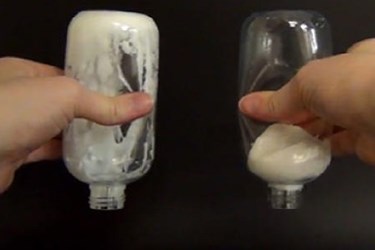Permanent Slippery Coatings For Food Packaging: What You Need To Know
By Isaac Fletcher, contributing writer, Food Online

Slippery coatings that allow foods to easily slide out of their packaging can be a great benefit to the food industry and an important step in eliminating food waste, but as with most innovations that come into contact with food, it is important to have all the relevant information.
In 2012, mechanical engineers at MIT developed LiquiGlide, an innovative coating that can be used in food packaging applications to prevent unnecessary waste caused by food sticking to the sides of a container. Since its inception, LiquiGlide and other types of slippery coatings have garnered some attention, but some safety concerns have been raised regarding their use with food products.
The LiquiGlide coating makes use of liquid-impregnated surfaces to reduce adhesion of hydrates. Other coatings that produce a similar visual effect tend to make use of polymers to create a super-hydrophobic surface, but it is not safe to consume foods that have touched the polymer surfaces. Liquid-impregnated surfaces, on the other hand, are different from these other hydrophobic surfaces since they are made of both solid and liquid materials — a textured solid and a liquid that is held in place by capillary forces to create a permanently slippery surface.
Related: Other packaging innovations that are helping to reduce food waste
With growing concerns regarding food safety, new innovations are generally approached with a watchful eye. Accordingly, it is important to understand the way the coating works and identify any potential safety issues.
Liquid-Impregnated Surfaces
As previously mentioned, the coating makes use of liquid-impregnated surfaces to create a permanently slippery surface. The surfaces can be greatly customized with different properties in order to meet the needs of a specific application. Additionally, there are hundreds of materials that have already been identified as being able to be used to create slippery coatings.
Finding the right coating to match a specific food can be a challenge, since a coating that works for mayonnaise may not necessarily work for ketchup. The important thing to note is that although there is a significant range of coating ingredients, the methodology is flexible enough to allow for a spectrum of coatings for different uses while still meeting strict safety standards.
Applications For Packaged Foods
Since liquid-impregnated surfaces can be created from such a wide range of materials, the coatings can actually be made from food materials that are approved by the FDA. This is a critical fact in assessing the viability of bringing packaging with slippery coatings to market, since one of the greatest hurdles in the path toward the coating’s acceptance is fear over food safety issues.
Effect On Food
With any primary packaging for food, it is always important to ensure that the packaging materials do not negatively impact the food’s quality or taste. The customized coatings can be carefully engineered to have no impact on taste or quality while still creating a slippery surface. Furthermore, the coatings eliminate food waste by ensuring that every bit is able to be extracted from the food’s packaging. Food waste is one of the greatest issues the industry currently faces, and slippery coatings may prevail as an important step in overcoming this challenge.
Future
The team behind the LiquiGlide coatings is currently working with clients around the globe to create customized applications. The slippery coating is expected to be ready for consumer markets within a year.
